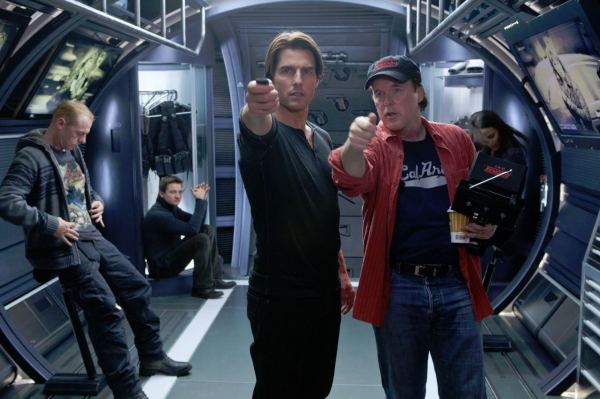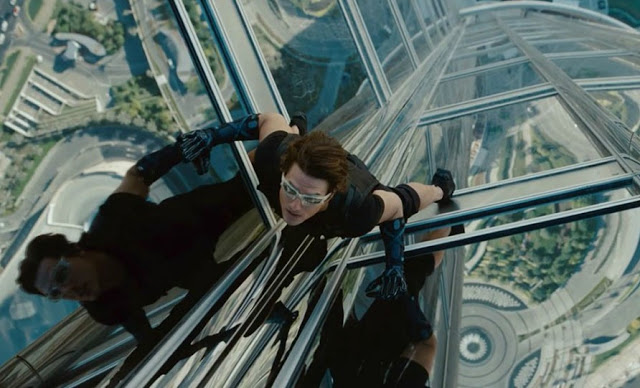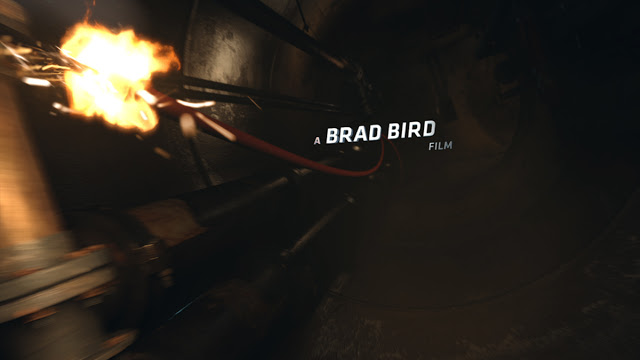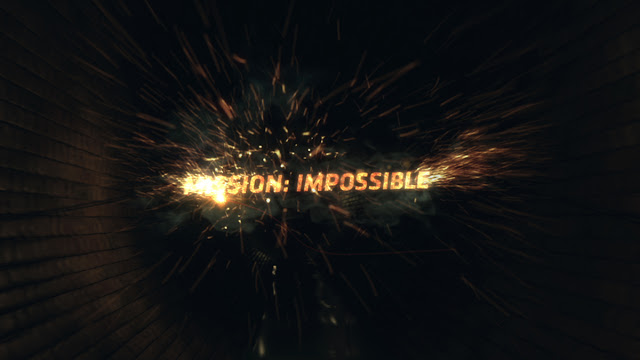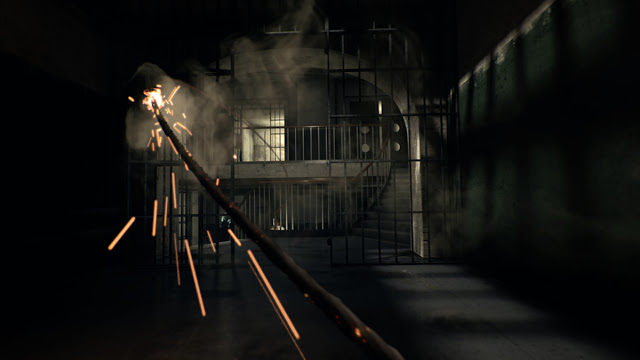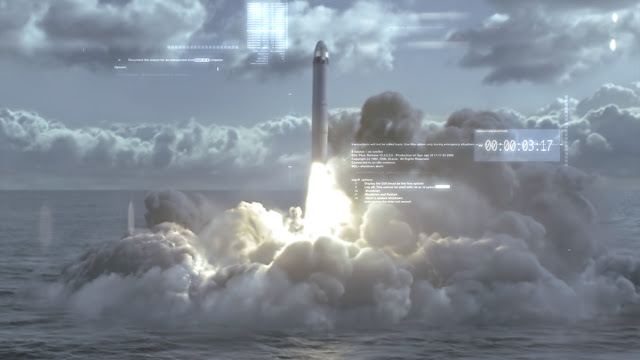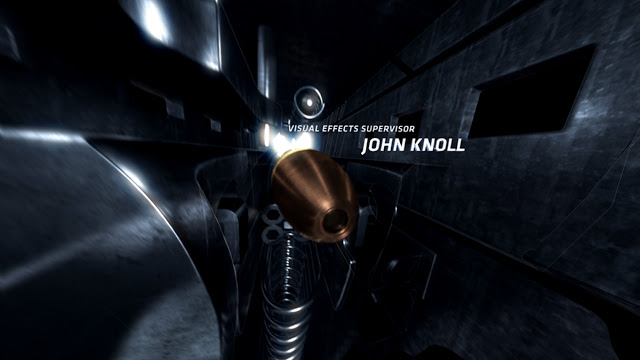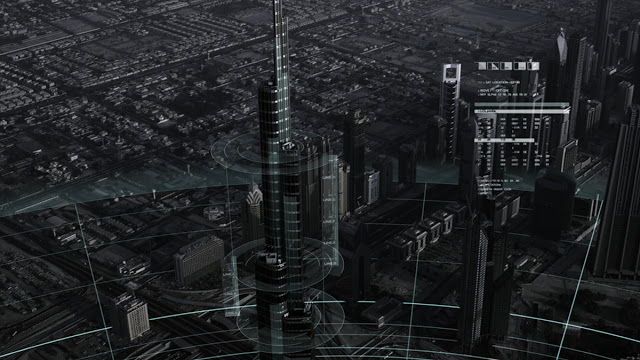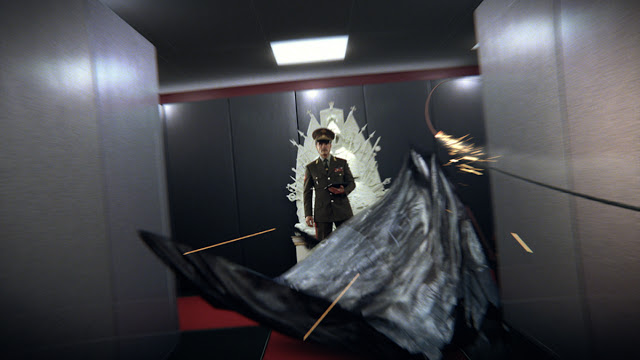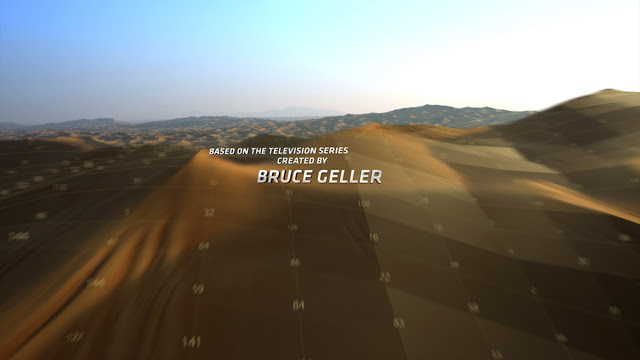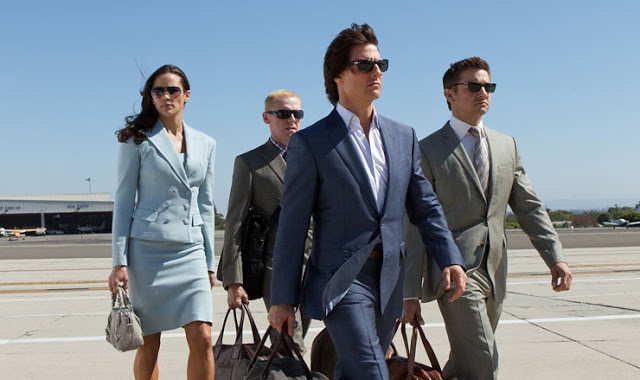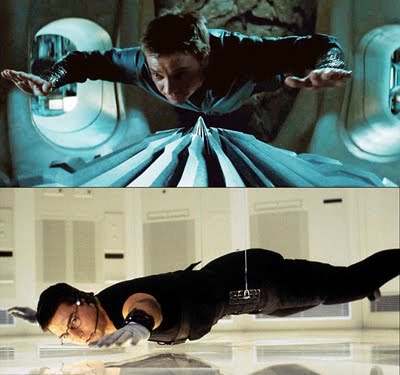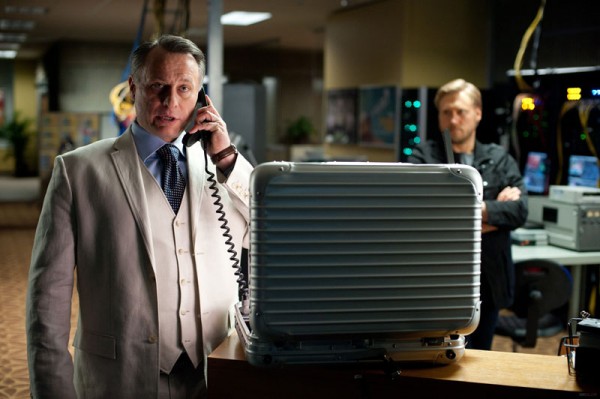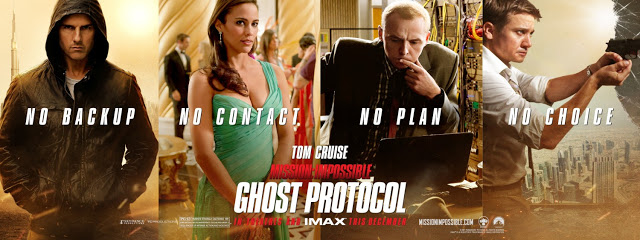Guess what? Mission: Impossible – Ghost Protocol doesn’t just live up to the expectations set by its predecessors, it readily surpasses them.
Once the producers recruited the director of The Incredibles, we were all sort of hoping M:I-4 would be cool, weren’t we?
Turns out, it’s the most purely entertaining of the series.
Star/co-producer Tom Cruise and director Brad Bird effortlessly maintain a delicate balancing act while juggling multiple elements during a rough endurance race through a daunting obstacle course.
The whole project is a Master Class celebration of the very art and craft and fun of making a huge action movie.
In other words, a flick that you and your buddies will be sampling forever.
Anyone who claims to be an action connoisseur who thought M:I-4 it was merely “okay” should rightfully give it a closer look. Like any eminently re-watchable flick, M:I-4 is destined for eternal home video glory, so bring forth the Blu-ray—stat! It’ll make for a great demo disc. You know what I mean: one of those cherished discs that you frequently revisit and permanently keep on deck to demonstrate the capabilities of your home theater system. Ghost Protocol will be one of ’em.
Here’s why:
Cruise’s character Ethan Hunt is really put through the wringer in this film, and with Mr. Cruise once again gamely performing his own superbly choreographed stunt work, he proves he can still go toe-to-toe with the tried and true big boys of serious action (Willis, Smith, Schwarzenegger, Stallone; Indiana Jones, James Bond). Further, the series-high $600 million global box office take of Ghost Protocol is a muscular vindication of Cruise’s box office vitality in the face of his ’80s and ’90s contemporaries, not to mention all the newfangled action bait such as Matt Damon, Vin Diesel, Jason Statham, and Channing fucking Tatum.
Fans still love Tom Cruise.
This, despite all that ballyhooed couch-dancing on Oprah back before M:I-3.
This, in light of the ensuing histrionics issued by Viacom chairman Sumner Redstone during his retaliatory crusade to have Cruise “evicted” from Paramount after that sofa bit ostensibly cost the studio $150,000,000 in global M:I-3 grosses.
This, regardless of the middling domestic returns of the Smiling One’s recent efforts (Valkyrie and Knight & Day, both of which performed just fine internationally).
And this, despite all the crude publicity of his marriage and his long association with a particularly cultish Church.
Point proven: Tom Cruise can still open a big-budget extravaganza that plays worldwide across multiple demographics. And he’s done it again for Paramount, to boot.
That’s the juicy, ironic part. He’s got this role down pat, and he’s still having an obvious good time portraying it, even if he is juuust starting to show his mileage. The screenplay sneaks in a few satisfactorily snarky political jabs at Bush Jr.’s “Mission Accomplished” blunder, the culture of shifting post-Cold War allegiances and the state of new world paranoia today in the wake of the PATRIOT Act.
The fact that Ghost Protocol turns out to be somewhat timely was perhaps to be expected. The revelation that it’s so darned good—and feels so timeless—is, in a way, the film’s most pleasurable spoiler. Loyal moviegoers showed up in droves for M:I-4, returned for multiple viewings and generated enough immediate goodwill for the producers to fast-track plans for M:I-5.
I’m so there.
SNAZZY TITLE SEQUENCE
A memorable opening credits sequence is pure cinematic comfort food, and director Brad Bird and his squad of animators and editors have conjured up an unexpected doozy for Ghost Protocol. At the utterance of a classic segue, Lalo Schifrin’s indelible theme kicks in and the IMAX screen fills with a giant CGI sparking fuse that snakes through a brisk précis of film we’re about to see—new locations we’ll visit, glimpses of new key players we’ll want to keep track of, hints at impossible scrapes our heroes will get into, and the promise of lots of futuristic espionage and rough-and-tumble action.
I wasn’t sure until I revisited the previous Missions at home that, in fact, M:I-4 is the only film of the series to feature an isolated and fully contained opening credits sequence. M:I-1 has a good one that pays tribute to the classic motif of the burning fuse—but it’s over-edited and the sequence doesn’t technically contain all the credits. M:I-2 and M:I-3 increasingly shirk the burning fuse montage. M:I-4 delivers a slam-bang one, in the classic 007 tradition.
You’ll excuse the cross-pollination of spy thrillers in the mind of a Serious Geek, but if the credits sequence of Ghost Protocol doesn’t get you revved to see this movie, check your pulse…and then go check to see what time The Iron Lady is playing down the hall.
IMAX, BABY!
Now’s a good time to spaz out specifically over the IMAX sequences.
Firstly, we’re talking real IMAX here, using 70mm film projected onto a giant 5-story-tall screen. Not the faux little rinky-dink “IMAX Digital” venues that have sprouted up across the country and sully the IMAX brand. Approximately 27 minutes of Ghost Protocol were shot utilizing high-resolution, large-format IMAX cameras and film stock. Not merely deployed as a gimmick, the IMAX in M:I-4 is fully woven into the very fabric of the film and is repeatedly put to tremendous good use throughout several key sequences.
It’s hands-down the best use of IMAX I’ve yet witnessed in any major motion picture.
Better than The Dark Knight.
Better than Avatar.
Gliding helicopter flyover shots of the film’s distinctive international locations really assist in putting you in the pilot’s seat, hurling you headlong into the bristling action. Later, a startling explosion at the Kremlin pushes to the absolute limit the photorealism of CGI trickery when used in conjunction with 70mm IMAX negatives. The Burj Khalifa Dubai skyscraper earns a glorious money shot, shortly followed by a virtuoso camera movement that opens on a tight shot of Cruise’s ankles, then cranes up and over him while he swings out the window, the camera smoothly hovering over and sliding outside with him, peering perilously down 130 stories.
Sure, some modest CGI was employed to erase the suspension cables, but there’s no faking the obvious stunt of the real Tom Cruise scaling the face of the world’s tallest building.
In 70mm IMAX.
With the wind howling and an ominous sandstorm looming on the horizon.
When that sandstorm finally blows in, we’re thrown right into the thick of it during an insane foot chase that escalates into a blind chicken race between two cars on a freeway. Later, during the final physical showdown, the enveloping size of the IMAX format captures with incredible detail the whirligig amusement-park thrills of a savage fight on the rotating, elevating platforms of an automated parking tower. In this precisely choreographed ballet of man versus machine, our hero dukes it out with the villain for possession of a vital briefcase—the contents of which provide for a conveniently shifting MacGuffin throughout the course of the plot. But more on that later.
I cannot spaz enough about how spectacular the IMAX footage is, and how strongly it elevates the passive act of watching Ghost Protocol to an all-immersive, senses-tingling, pulse-quickening experience. As M:I-4 winds down its initial theatrical engagement and filters into second-run venues, keep your eyes peeled for the precious few theaters still showing the film in IMAX. I’m not particularly partial to the tiny “faux-MAX” digital screens, but they represent the most obvious choice to continue an IMAX run indefinitely because the theaters don’t have to be custodians of an actual print of the movie. Best of all, if you can catch the film in 70mm “Super IMAX,” you’ll get the most bang for your IMAX buck—and you’ll still get to see the elusive 6-minute prologue for The Dark Knight Rises.
CRACKERJACK ENSEMBLE
Essential for an ensemble cast, each of the players is allowed an opportunity to flex their chops and their characters are given unexpected room for depth and growth.
It wasn’t until J.J. Abrams’ M:I-3 that I began to appreciate the team dynamic and take closer notice what makes Ethan Hunt human, and here in M:I-4 we get to see an even more intriguing aspect of his persona (spoiler alert: much of it explains with unexpected gravitas the absence of his wife from M:I-3). There is a heavier emphasis on the isolated team dynamic, and it provides the sturdiest springboard for a continuing series of films with new players.
Notably, it’s refreshing to see a woman of color (Paula Patton) holding her own with Tom Cruise, portraying an agent of equal standing to Ethan Hunt rather than a comic sidekick or love interest. (Though they do get to make out—all part of the plan.) She’s got her own character arc to traverse, and she gets the opportunity to bust loose and open not one but two cans of serious whoop-ass during her journey. Gadget geek Benji (Simon Pegg) returns for obligatory comic relief, and his nimble repartee with each of the team members is a lot of fun.
The real revelation is the introduction of Brandt (Jeremy Renner) as a war-weary analyst with more to his resume than initially meets the eye. The filmmakers are obviously grooming his character to carry the series after Cruise steps away from the cameras—maybe in the next film; if not certainly soon after (though I trust Cruise will remain a creative force behind the scenes). Brandt definitely earns his stripes by the end of M:I-4 to secure a prominent spot on the team for future movies.
As Ghost Protocol concludes with a tease for M:I-5, the groundwork for a series of Missions with or without Ethan Hunt has been firmly laid.
NODS TO PREVIOUS MISSIONS (AND A CERTAIN SEMINAL ’80s CLASSIC)
There are in-jokes, references and cameos aplenty in Ghost Protocol.
The filmmakers playfully riff on the recurring “red light, green light” motif from M:I-1, rethought here as a running visual gag during the opening prison break, tweaked for the centerpiece skyscraper scaling stunt, and carried on through the final critical moments of the supersonic climax.
Ethan Hunt’s uncanny ability to read lips from across a room, introduced in M:I-3, nicely punctuates a memorable sequence in Ghost Protocol that finds Ethan tiptoeing along a hospital window ledge while a suave detective silently dares him to jump (and is duly gob smacked over Ethan’s narrow escape).
The Burj Khalifa Dubai sequence takes the rock-climbing intro of M:I-2 to far more dizzying heights.
Later, another nod towards the first movie recruits a familiar secondary character under similar circumstances, and his appearance becomes one of several winks at the granddaddy of all modern action thrillers, John McTiernan’s Die Hard.
Another ode to Die Hard: Cruise’s Ethan Hunt mans-up to Bruce Willis’ John McClane when it comes to dangling off a tall building while clutching a fire hose.
The Mission: Impossible tropes and trappings are myriad—self-destructing messages; awkward retinal security scans; high-tech gadgetry; latex doppelganger masks; overly elaborate methods of subterfuge; handy GPS trackers; bad guys who thoughtlessly shoot at any moving target; some manner of aerial acrobatics and assorted complex computer hackings. Bird and Cruise flirt with our expectations of these elements, and find unexpected humor and surprise in playfully undermining each of them.
THAT PIXAR TOUCH
Evidently, some of director Brad Bird’s Pixar magic rubbed off on the cast and crew.
That cool retro vibe you sense during Ghost Protocol is the result of its refreshing old-school mentality. Simple things like an emphasis on character, humor, plot logic and reality-based stunts versus CGI fakery go a long way towards distinguishing this movie not only from most expensive, generic extravaganzas but also from the disheartening spate of Part 4’s that tend to coast along in neutral or slip into complete self-mockery. Further, the smooth cinematography and clockwork editing displayed here are a welcome respite from the shaky, twitchy Bourne Identity flicks and their caffeinated clones.
The save-the-world plot of M:I-4 is minimal, stripped to its barest essentials. The villain is a stalwart staple straight out of the classic Cold War thrillers of yesteryear—the radical renegade Russian bent on nuclear Armageddon. In the glacially paced and overly convoluted M:I-1, director Brian De Palma seemed most interested in framing sleek angular shots. John Woo’s M:I-2 is all adrenalized slo-mo action overload blasting on full volume. For M:I-3, J.J. Abrams never met a lens flare or camera shake he didn’t embrace, but the gritty realism he introduces to the series lends his film an overall air of grimness that sucks out much of its fun.
With Ghost Protocol, we are treated to the purest expression of grade-A popcorn cinema since Officer John McClane crashed the Christmas party at Nakatomi Tower…and maybe even since Indiana Jones first raided the Lost Ark.
THE PHANTOM MacGUFFIN
I nearly lost count of how many times the MacGuffin is switched, but the shifting “prize” is one the film’s slyer inventions.
First it’s stolen launch codes. Then it’s a red-herring. Then it’s a scrambled copy followed by a real copy of the same launch codes. Then it’s a satellite access code. Finally it’s a portable uplink carried in a steel briefcase.
The very plot itself sometimes feels like a MacGuffin, too, inventing an escalating series of events and showdowns that, because they actually live up to the film’s moniker “impossible,” have our heroes scrambling on their feet to improvise their next step. It’s almost beside the point to credit the plot with maintaining its logic (which it does) since the galloping momentum of the screenplay provides for a breakneck ride with little time to worry about the details anyway.
In other words, a terrific way to keep your eyes on the ball and avoid the lethargy that typically sets in during any given Chapter Four of any given series.
(MOSTLY) ORCHESTRAL SCORE
It seems unheard of for a preordained blockbuster, but composer Michael Giacchino gets the entire ending credits crawl to himself, conducting a symphonic reprise of the film’s signature themes that serves as a glorious reminder of the saner days before record company executives held any sway over the treacherous art of shoe-horning generic soundtrack album filler into the movie itself.
Oh, how I miss those days.
Indeed, Giacchino gets full reign of most of the film’s running time, without the typical scenario of a wall-to-wall radio-friendly soundtrack competing for air time with the orchestra. Danny Elfman’s score for M:I-1 is interspersed with various pieces of stock classical music and a Cranberries tune. Hans Zimmer’s go at M:I-2 is louder and undercut by year-2000 pop/rock filler. Giacchino previously scored M:I-3 but I was surprised to recall just how much source material is used on the soundtrack (though, granted, the “We Are Family” gag is priceless).
Finally, in the first three Mission: Impossible movies, we are force-fed rock/hip-hop/techno variations on Lalo Schifrin’s signature theme as interpreted by the likes of two guys from U2, Limp Bizkit, Metallica and Kanye West—and each of the previous Mission films are irrevocably dated as a result of it. Seemingly by conscious choice, director Brad Bird and composer Michael Giacchino dispense with the jukebox of pop ditties for Ghost Protocol and, with one exception, rely on purely orchestral music to complement the film. There’s literally one song on the Ghost Protocol soundtrack, and it’s well utilized.
The resultant film score is a lush and colorful symphony, the likes of which I haven’t appreciated in years.
“AIN’T THAT A KICK IN THE HEAD”
The sole song on the soundtrack, courtesy of Dean Martin, is used to great comic effect during the pre-credits teaser sequence as we’re reacquainted with our muscular and loyal action hero with the daredevil spirit.
Considering the film’s hefty complement of kick-ass action, death-defying stunt work and brutal fisticuffs, the tune serves as an apropos anthem for the grueling endurance test our weary but far-from-worn hero is put through. From strictly an action standpoint, it’s high praise to say this film feels more like Die Hard than any of that film’s three sequels. It also feels more Bond-ian in tone than many legitimate 007 flicks. And this guy could eat Jason Bourne for breakfast.
Bird and Cruise really put Ethan Hunt through the heightened rigors of saving the world in the 21st century, ratcheting up the white-knuckle tension with a series of increasingly breathless cliffhangers and ticking-clock suspense.
Unlike some other high-octane action movies that overstay their welcome, run out of gas and/or succumb to corporate bloat (paging Michael Bay); M:I-4 maintains its lean and feverish drive with barely a wasted moment.
Even after all of Tom Cruise’s running and leaping and brawling, the film sustains its momentum throughout what feels like an extra act—an unexpected sojourn to Mumbai—for the sake of reminding us how viable Cruise remains as a brawny action hero who never loses his wind, and for the fun of capping off the movie with an indulgent, rousing, opulent finale (which is, naturally, a tantalizing tease of the next sequel).
IT’S SHOWING IN “SUPER IMAX” AT THE FREAKING SMITHSONIAN (!)
When I think of seeing films at the Smithsonian, I recall the monumental IMAX experiences of my youth (To Fly!, The Living Sea, Wings of Courage, Space Station, Ring of Fire, et cetera).
M:I-4 has been playing everywhere since Christmas—in regular theaters, on those digital “Junior-IMAX” screens and at select super-duper 70mm IMAX venues (there aren’t many of ’em). Thanks to a happy confluence of programming, Ghost Protocol has been playing on two giant 70mm IMAX screens in my city at two museums of the Smithsonian Institution, and I’ve seen it thrice.
The pure IMAX presentation—which includes the exclusive sneak peek at the Prologue of The Dark Knight Rises—ranks among my Top-10 cinematic experiences of all time: flawless projection, thunderous sound, immaculately maintained auditorium, respectful and attentive audience.
Oftentimes, these giant IMAX screens will host the latest Disney re-issue or the new Happy Feet or whatever family film is currently in wide release, and that film will dubiously share the schedule with the usual line-up of prestigious nature and NASA documentaries.
Upon due consideration, Ghost Protocol actually fits quite comfortably into the programming aesthetic of the Smithsonian Institution: it’s a superbly crafted and finely tuned piece of modern clockwork, the epitome of the big-budget Hollywood spectacle; its use of IMAX is nothing short of awesome; it’s immensely entertaining; and it’s got the longevity and high-repeat factor desired in a movie that could conceivably continue to play for months on their giant IMAX screens, even after the home video release.
More so than the previous three Missions, Ghost Protocol ought to stand the test of time. I’m eager to revisit the IMAX version yet again.
Ain’t that a kick in the head?





































































































